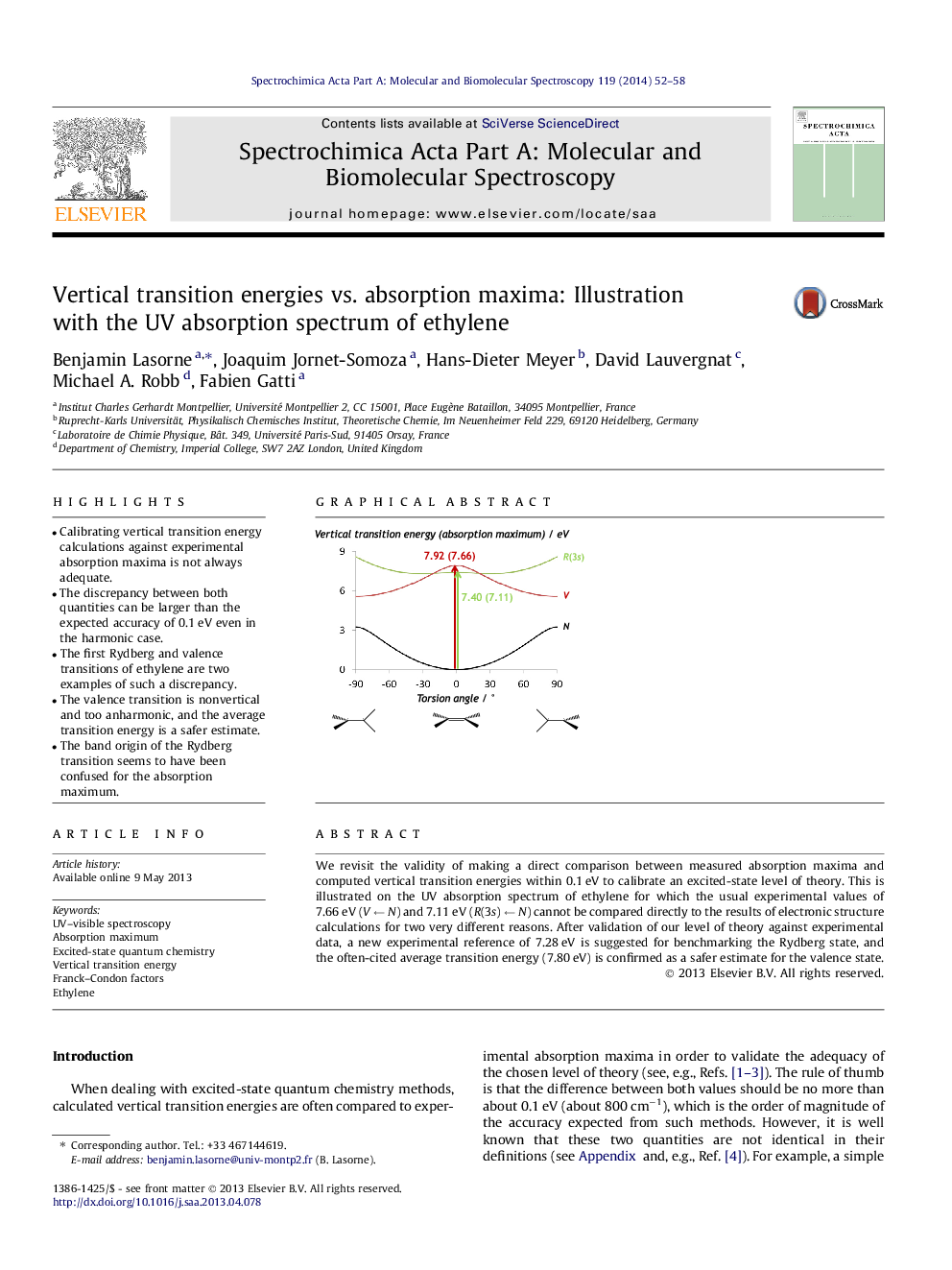| Article ID | Journal | Published Year | Pages | File Type |
|---|---|---|---|---|
| 1233085 | Spectrochimica Acta Part A: Molecular and Biomolecular Spectroscopy | 2014 | 7 Pages |
•Calibrating vertical transition energy calculations against experimental absorption maxima is not always adequate.•The discrepancy between both quantities can be larger than the expected accuracy of 0.1 eV even in the harmonic case.•The first Rydberg and valence transitions of ethylene are two examples of such a discrepancy.•The valence transition is nonvertical and too anharmonic, and the average transition energy is a safer estimate.•The band origin of the Rydberg transition seems to have been confused for the absorption maximum.
We revisit the validity of making a direct comparison between measured absorption maxima and computed vertical transition energies within 0.1 eV to calibrate an excited-state level of theory. This is illustrated on the UV absorption spectrum of ethylene for which the usual experimental values of 7.66 eV (V ← N) and 7.11 eV (R(3s) ← N) cannot be compared directly to the results of electronic structure calculations for two very different reasons. After validation of our level of theory against experimental data, a new experimental reference of 7.28 eV is suggested for benchmarking the Rydberg state, and the often-cited average transition energy (7.80 eV) is confirmed as a safer estimate for the valence state.
Graphical abstractFigure optionsDownload full-size imageDownload as PowerPoint slide
